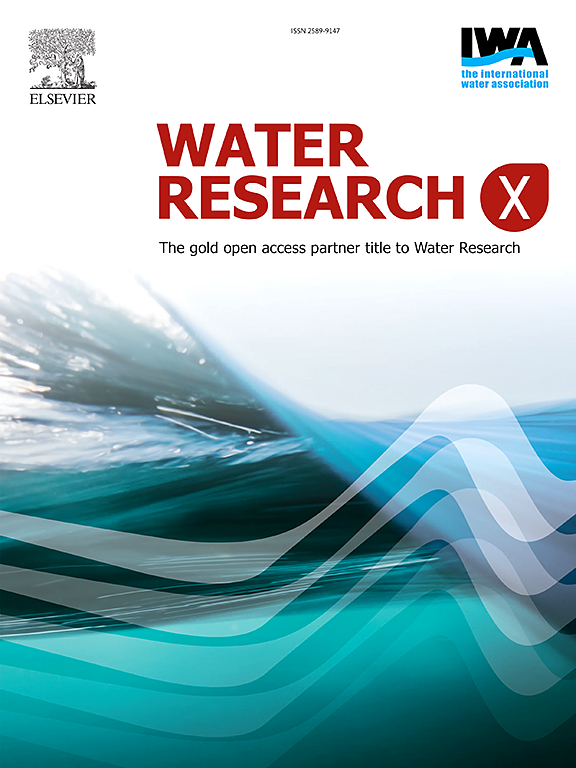低温冲击和hap增强的一期部分硝化/厌氧氨氧化工艺:长期稳定性、高速率脱氮和15°C下的操作策略
IF 8.2
2区 环境科学与生态学
Q1 ENGINEERING, ENVIRONMENTAL
引用次数: 0
摘要
一段部分硝化厌氧氨氧化工艺(PNA)由于厌氧氨氧化活性极低和亚硝酸盐积累,在低温条件下存在严重的性能不优问题。为了解决低温下亚硝酸盐积累和性能下降的问题,进行了一段式羟基磷灰石(HAP) PNA反应器的长期实验。该研究旨在通过研究氮和磷的去除效率及其对细菌活性和群落、热力学和颗粒污泥特性的影响,确定在15°C低温下保持高容量的主要挑战和关键因素。在15℃下运行300 d以上后,首次实现了0.97 kg/m3/d的高氮去除率。厌氧氨氧化菌群落表现出对温度降低的敏感性,而氨氧化菌则没有。考虑到低温对细菌群落和颗粒污泥的直接和间接影响,导致AnAOB比例下降,有效的污泥管理——包括污泥含量控制和选择性排放非hap颗粒污泥——在低温下尤为重要。这种方法有助于防止过量的生物质积累,保持平衡的PNA反应,并确保最佳的操作性能。值得注意的是,HAP-PNA颗粒污泥在低温下保持良好沉降性的能力进一步支持了污泥管理实践的有效性。本文章由计算机程序翻译,如有差异,请以英文原文为准。

Low temperature impact and HAP-enhanced one-stage partial nitritation/anammox process: Long-term stability, high-rate nitrogen removal, and operational strategies at 15°C
The one-stage partial nitritation and anammox (PNA) process have the serious problem of suboptimal performance at low temperatures due to the extremely low anammox activity and nitrite accumulation. To tackle the challenges of nitrite accumulation and performance deterioration at low temperatures, a long-term experiment of one-stage hydroxyapatite (HAP)-based PNA reactor was conducted. The study aimed to identify the major challenges and critical factors for maintaining high capacity under low-temperature of 15 °C by investigating nitrogen and phosphorus removal efficiency and its impact on bacterial activity and communities, thermodynamics, and granular sludge characteristics. After the operation at 15 °C for over 300 d, a high nitrogen removal rate of 0.97 kg/m3/d was first achieved. The anammox community demonstrated reduced sensitivity to temperature decreases, whereas ammonia-oxidizing bacteria did not. Considering the direct and indirect impacts of low temperatures on bacterial communities and granular sludge, which led to a decreasing AnAOB proportion, effective sludge management—encompassing sludge content control and selective discharge of non-HAP granular sludge—was particularly critical at lower temperatures. This approach helped prevent excess biomass accumulation, maintain balanced PNA reactions, and ensure optimal operational performance. Notably, the ability of HAP-PNA granular sludge to maintain good settleability at low temperatures further supported the effectiveness of sludge management practices.
求助全文
通过发布文献求助,成功后即可免费获取论文全文。
去求助
来源期刊

Water Research X
Environmental Science-Water Science and Technology
CiteScore
12.30
自引率
1.30%
发文量
19
期刊介绍:
Water Research X is a sister journal of Water Research, which follows a Gold Open Access model. It focuses on publishing concise, letter-style research papers, visionary perspectives and editorials, as well as mini-reviews on emerging topics. The Journal invites contributions from researchers worldwide on various aspects of the science and technology related to the human impact on the water cycle, water quality, and its global management.
 求助内容:
求助内容: 应助结果提醒方式:
应助结果提醒方式:


